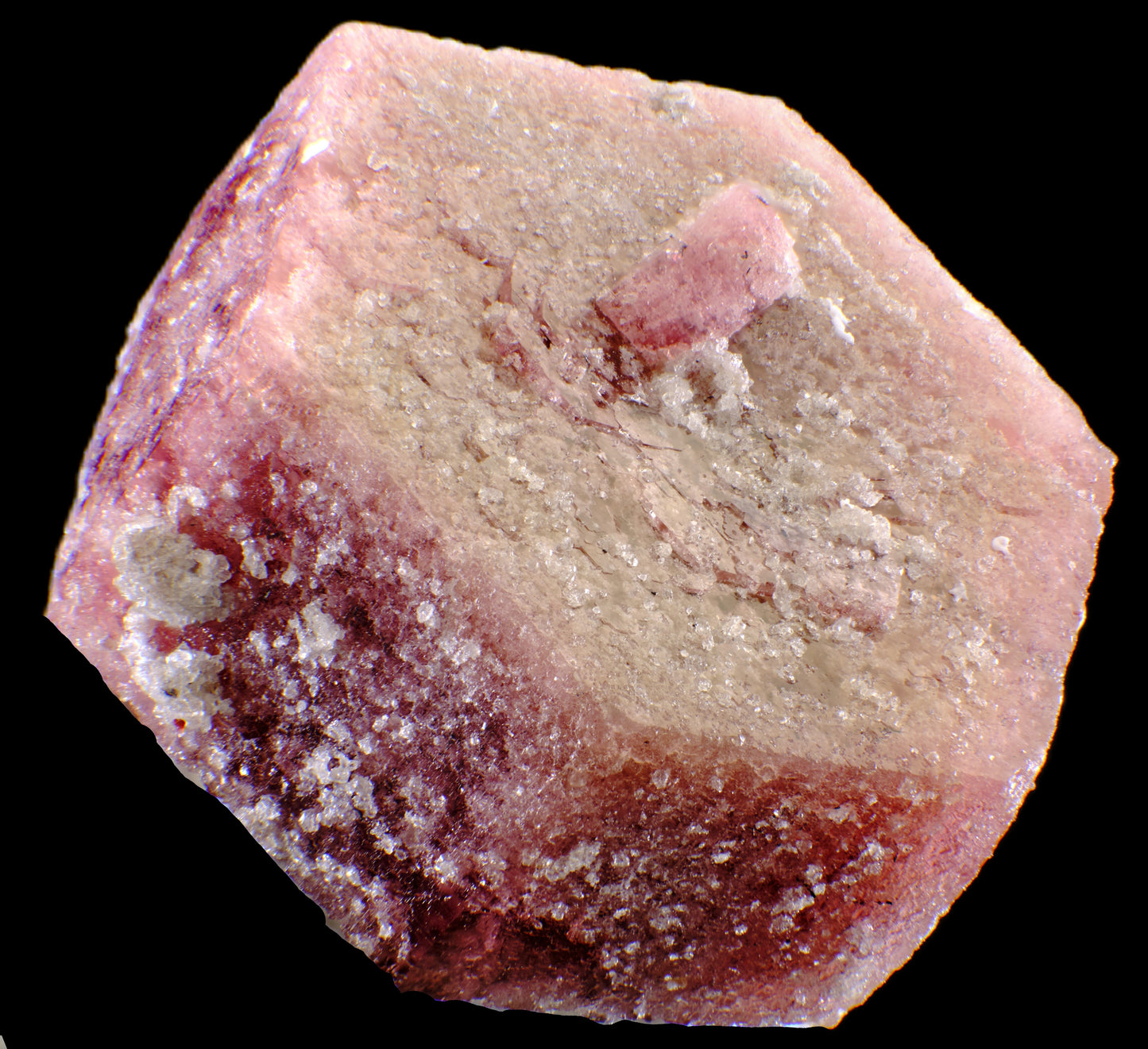Red Beryl
Red Beryl
Red Beryl, Frank Stallings Solar Wind Mine, Thomas Range, Juab County, Utah RARE
A very rare example of two interpenetrating red beryl crystals. Not only is red beryl extremely rare, with only three known localities in the US, but finding such interpenetrating twins is rarer still. Add to that the extraordinary presence of “ghost” microcrystals floating in the crystal matrix, as shown in the macrophotography, and you have the makings of a true collector's item. The crystals are complete all around, but for one minor with sharp edgework and a textbook habit. Faces are lustrous, with en-echelon hexagonal impressions. The specimen presents micro-inclusions of the rare iron-titanium oxide pseudobrookite with topaz. Several images have been backlit to highlight the internal structure. This piece, along with a vanishingly few others, were extracted from a pocket October 4th, 2024. The specimen comes with a certificate of authenticity from the original collectors, Frank and Kyndall Stallings.
About red beryl: Gem-quality red beryl is estimated to be worth 1,000 times more than gold and is so rare that one red beryl crystal is found for every 150,000 diamonds. Red beryl formation began in the Thomas Range of Utah with the eruption of a topaz rhyolite lava from volcanic vents. As the lava began to cool, shrinkage cracks formed, creating pathways for high temperature gases rich in beryllium to escape. Oxidized surface water also began seeping into these cracks and mixed with the rising beryllium gases. The gases reacted with the surface water, silica, alkali feldspar, and iron manganese oxides from the lava to form red beryl crystals. Red beryl probably grew at temperatures between 300 to 650 degrees Celsius. The crystals in the Thomas Range are associated with topaz, bixbyite, garnet, pseudobrookite, or hematite.
Reference: Utah Geological Survey, Survey Notes, v. 34 no. 3, September 2002, Author: Carl Ege
Dimensions: 10 x 7 x 3 mm.
Share
Couldn't load pickup availability












